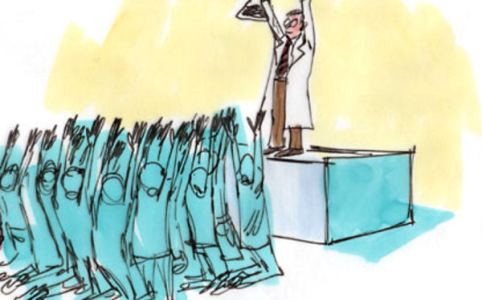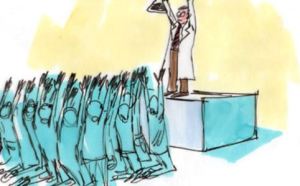In two recent papers, an international team of scientists describes the first known nitrogen-fixing organelle within a eukaryotic cell, which the researchers are calling a nitroplast. Phys.Org reports: The discovery of the organelle involved a bit of luck and decades of work. In 1998, Jonathan Zehr, a UC Santa Cruz distinguished professor of marine sciences, found a short DNA sequence of what appeared to be from an unknown nitrogen-fixing cyanobacterium in Pacific Ocean seawater. Zehr and colleagues spent years studying the mystery organism, which they called UCYN-A. At the same time, Kyoko Hagino, a paleontologist at Kochi University in Japan, was painstakingly trying to culture a marine alga. It turned out to be the host organism for UCYN-A. It took her over 300 sampling expeditions and more than a decade, but Hagino eventually successfully grew the alga in culture, allowing other researchers to begin studying UCYN-A and its marine alga host together in the lab. For years, the scientists considered UCYN-A an endosymbiont that was closely associated with an alga. But the two recent papers suggest that UCYN-A has co-evolved with its host past symbiosis and now fits criteria for an organelle.
In a paper published in Cell in March 2024, Zehr and colleagues from the Massachusetts Institute of Technology, Institut de Ciencies del Mar in Barcelona and the University of Rhode Island show that the size ratio between UCYN-A and their algal hosts is similar across different species of the marine haptophyte algae Braarudosphaera bigelowii. The researchers use a model to demonstrate that the growth of the host cell and UCYN-A are controlled by the exchange of nutrients. Their metabolisms are linked. This synchronization in growth rates led the researchers to call UCYN-A "organelle-like." "That's exactly what happens with organelles," said Zehr. "If you look at the mitochondria and the chloroplast, it's the same thing: they scale with the cell."
But the scientists did not confidently call UCYN-A an organelle until confirming other lines of evidence. In the cover article of the journal Science, published today, Zehr, Coale, Kendra Turk-Kubo and Wing Kwan Esther Mak from UC Santa Cruz, and collaborators from the University of California, San Francisco, the Lawrence Berkeley National Laboratory, National Taiwan Ocean University, and Kochi University in Japan show that UCYN-A imports proteins from its host cells. "That's one of the hallmarks of something moving from an endosymbiont to an organelle," said Zehr. "They start throwing away pieces of DNA, and their genomes get smaller and smaller, and they start depending on the mother cell for those gene products -- or the protein itself -- to be transported into the cell."
Coale worked on the proteomics for the study. He compared the proteins found within isolated UCYN-A with those found in the entire algal host cell. He found that the host cell makes proteins and labels them with a specific amino acid sequence, which tells the cell to send them to the nitroplast. The nitroplast then imports the proteins and uses them. Coale identified the function of some of the proteins, and they fill gaps in certain pathways within UCYN-A. "It's kind of like this magical jigsaw puzzle that actually fits together and works," said Zehr. In the same paper, researchers from UCSF show that UCYN-A replicates in synchrony with the alga cell and is inherited like other organelles.


Read more of this story at Slashdot.








